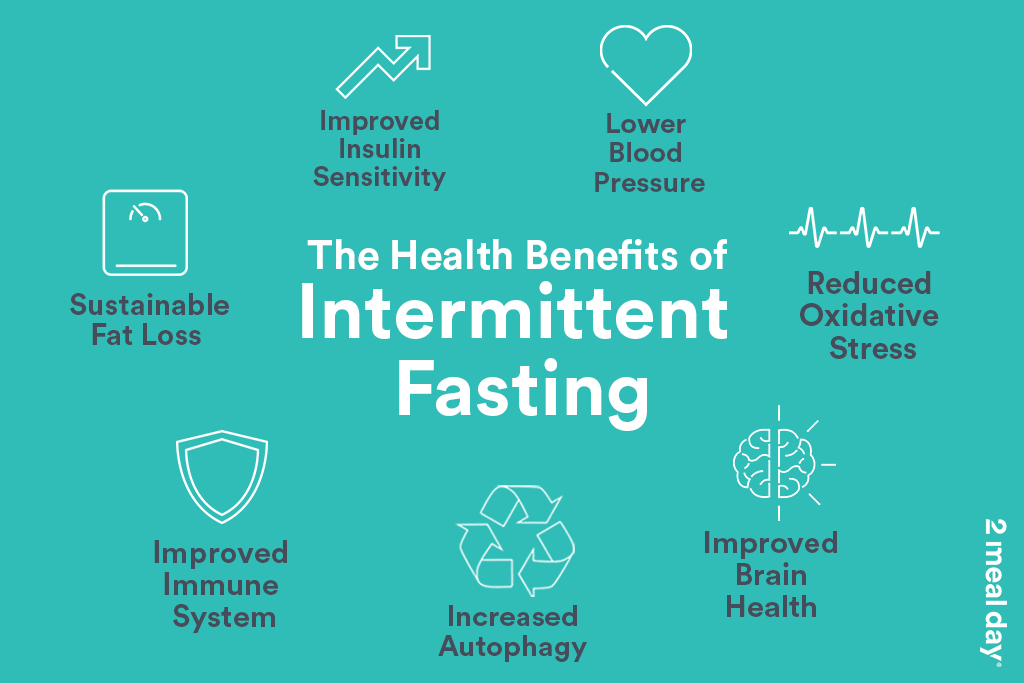In my opinion, both methods are effective and have many health benefits.
But there are some key differences.
Understanding the differences can help you decide which intermittent fasting plan is best for you.
One Meal a Day (OMAD) Fasting Method
The One Meal a Day fasting method is exactly how it sounds…
You only eat one meal per day.
Eating on an OMAD schedule will mean you fast for around 23 hours of the day.
Which is quite extreme.
Particularly if you are brand new to intermittent fasting.
What are the Benefits of OMAD Intermittent Fasting?
1. Weight Loss
The OMAD diet can be an effective weight loss strategy.
It makes sense.
When you only eat one meal per day, you are making it very hard to eat more calories.
This makes it easier to eat in a calorie deficit.
Which is essential for fat loss.
2. Improved Insulin Sensitivity and Stable Blood Sugar Levels
Intermittent fasting has been shown to improve insulin sensitivity.
Being insulin sensitive will reduce your risk of developing Type 2 Diabetes.
You become more insulin-sensitive when you stabilise your blood sugar levels.
Eating less frequently has been shown to do just that.
3. Autophagy
Autophagy is your body’s process of reusing old and damaged cell parts.
It’s a self-cleaning mechanism that has been shown to improve many biomarkers of health.
The longer you fast, the more likely Autophagy will occur.
What are the Negatives of OMAD Intermittent Fasting?
1. It’s too advanced for most people
Most people will not enjoy or be able to sustain the OMAD.
As a fat loss coach, all I care about is sustainability and long-term success.
I haven’t heard of many people being able to sustain it in the long term.
2. It can exacerbate disordered eating
Anyone with a history of emotional eating, binging or other disordered eating habits should avoid OMAD.
It could make these behaviours worse.
I advise working on improving these issues first.
Then gradually easing into intermittent fasting.
3. It can be tough on digestion
Your digestive system needs to work on overdrive to process one massive meal.
Your stomach needs to release a lot of acids and digestive enzymes.
This could be uncomfortable.
Particularly if you have any underlying digestive issues.
4. It can be challenging to get the right nutrients
When you only eat one meal in a day, it can mean you don’t get the right vitamins and minerals.
Vitamins and minerals are known as micro-nutrients.
They are essential to proper function in the body.
It can get complicated trying to get all the essential micro-nutrients in one meal.
5. It can impact physical performance
OMAD can be challenging if you are particularly active, and want to perform at your best.
There is a risk that you are in a big calorie deficit.
This will impact performance and increase recovery time.
It can also affect motivation to train and exercise.
None of this is any good if you are training hard.
Who could benefit from OMAD?
A small percentage of people might benefit from OMAD.
Anyone that cannot move, due to injury or health issues could find it useful.
For people that want drastic weight loss, in a short amount of time, it might be useful.
Although I NEVER recommend trying to lose a big amount of weight in a short amount of time.
Lastly, people who have already gotten used to intermittent fasting might benefit from the OMAD.
2 Meals A Day (2MAD) Fasting Method
Again, it’s exactly what it says on the tin!
You drop one meal and only eat two meals in a day.
Either you don’t eat breakfast, and have lunch and dinner.
OR
You don’t eat dinner and have breakfast and lunch.
In my experience, most people choose to skip breakfast.
It’s what I do.
What are the benefits of 2MAD Intermittent Fasting?
1. Weight Loss
When you drop a meal, you will reduce your overall calorie intake.
It’s harder to eat in a calorie surplus when you are only eating two meals a day.
2. It’s better for beginners
You are far less likely to experience the initial short-term negative side effects.
This can include lethargy, irritability, headaches, and out-of-control hunger.
These side effects usually disappear after a few days.
But 2 meals a day will reduce the severity when compared to OMAD.
3. It’s less taxing on digestion.
Which means that it is going to be more accessible for a lot more people.
In fact, moderate methods of intermittent fasting have been shown to improve digestion.
4. It’s suitable for very active people
I have personally trained and competed for:
- Sprinting events
- Olympic lifting
- Ultra trail marathons
- Road marathons
- Advanced alpine mountaineering
I have used the 2 meal day method throughout my training and recovery, with great success.

At the summit of Mont Blanc (4808m)
5. It’s sustainable in the long term
Again, I want to stress, I have a bias toward sustainability.
Anyone can achieve fat loss success in the short term.
That’s not difficult.
What’s difficult is maintaining the results.
The 2 meals a day intermittent fasting method is sustainable.
I have done it for 10 years myself, and have had many clients maintain it in the long term.
6. Improved insulin sensitivity, metabolic flexibility, and stable blood sugar levels.
Many biomarkers of health improve when you incorporate 2MAD.
What are the negatives of 2MAD intermittent fasting?
To be honest, there aren’t many.
For some people, it might still be possible to eat a calorie surplus in two meals.
Particularly if you eat lots of processed foods, that are high in calories but low in nutrients.
For some people, dropping a meal might be too extreme.
Easing into fasting gradually might be more effective.
Who could benefit from 2MAD intermittent fasting?
Almost anyone.
It is an incredibly effective long-term fat-loss tool.
OMAD vs. 2MAD, Which is Better?
In my professional opinion, 2MAD is a better option for most people.
As mentioned above, a small percentage of people might benefit from OMAD.
But they are in the minority.
If you are looking for long-term fat loss and improved health, 2MAD is the way to go.
It’s important that you do not make any of these common intermittent fasting mistakes.
Doing so will mean that intermittent fasting is just another fad diet.
Which only gets you short-term results.
Want to ease into the process of fasting gradually?
Check out my 30-Day Reset to reset your body to burn fat and improve your health


